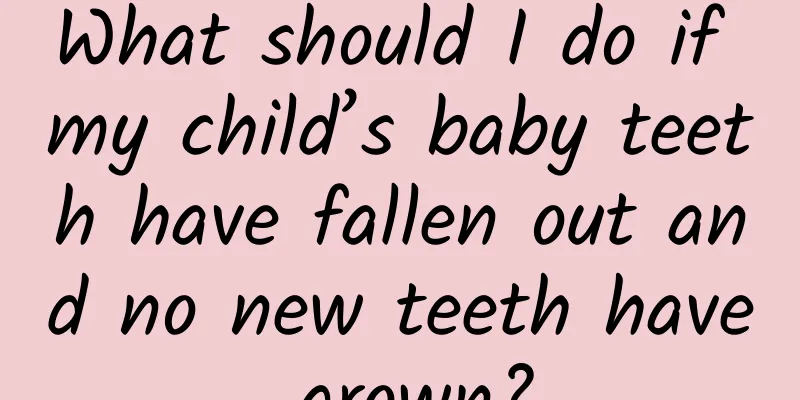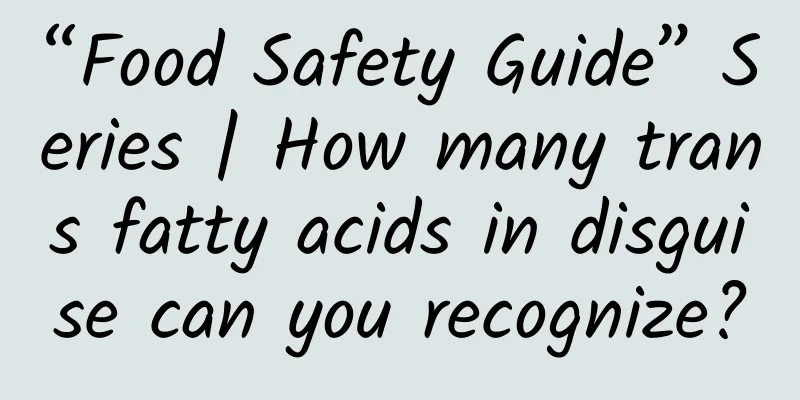What should I do if my child’s baby teeth have fallen out and no new teeth have grown?

|
This is the 3873rd article of Da Yi Xiao Hu Xiao Fang is in the fourth grade of primary school this year. Like other children, he lives a carefree life. However, the results of the recent school physical examination made his family worried. It turned out that Xiao Fang's upper right deciduous front teeth had fallen out for more than three years and there was no sign of growth. Coincidentally, a classmate of his was undergoing early correction at the Affiliated Stomatological Hospital of Tongji University. Xiao Fang's family came to the orthodontic department for a detailed examination before the Chinese New Year. The doctor found that Xiao Fang's upper right central incisor, lateral incisor, and canine were not seen in the mouth, and there was a moderately loose deciduous canine on the upper right. The doctor took an X-ray of Xiao Fang and found that the three upper right front teeth of Xiao Fang were wrapped in the alveolar bone into a ball shape, checking and balancing each other. No wonder they have not grown out! The doctor said that Xiaofang's condition is "impacted teeth", which occurs in 4-14% of the population, and it is particularly rare for Xiaofang's three teeth to not erupt. So how should he be treated? The doctor suggested that in Xiaofang's case, the impacted teeth should be pulled into the mouth one by one as soon as possible to avoid more serious consequences. However, the treatment time is relatively long, estimated to be two to three years, and there is root resorption, and the teeth may become slightly loose after being pulled out. After repeated consideration, in order to prevent Xiaofang's front teeth from being used as "dentures" in the future, the family unanimously agreed to the treatment. During the treatment, the doctor took a 3D CBCT scan of Xiaofang. Through 3D reconstruction, the growth direction and adjacent relationship of each tooth were determined, and the order of orthodontic traction was determined. Then, in cooperation with the oral and maxillofacial surgeon, the location, sequence and time of the window opening for the impacted teeth were determined. After a period of hard work, Xiaofang's teeth miraculously grew out one by one. After one and a half years of treatment, Xiaofang's upper right canine and lateral incisor were successfully integrated into the dental arch; CBCT showed that the upper right central incisor was in a palatal position and required labial traction. After another year of correction, the three teeth were finally restored to the dental arch. Coincidentally, Xiao Wang went to the hospital for a checkup because his deciduous teeth had not fallen out for a long time. He unexpectedly found that the lower right second premolar was lying horizontally in the alveolar bone. X-rays showed that the lower right second premolar was horizontally impacted, the root development was only half of that of a normal tooth of the same name, and the crown of the lower right first molar was tilted. Undoubtedly, Xiao Wang's situation was also quite complicated. If it was not treated, the root development of this impacted tooth would be problematic and it would face the risk of extraction in the future. Treatment, on the other hand, meant the possibility of a protracted battle. Finally, after the concerted efforts of the orthodontist, pediatric dentist, oral surgeon team, and Xiao Wang's close cooperation, it took nearly a year to finally install this impacted tooth in the correct position. So how do you determine whether a child’s tooth eruption is normal? 1. In most cases, there is a certain correlation between dental age and physiological age. The upper and lower four incisors erupt at the age of 7-8 years, while canines and premolars tend to grow at the age of 9-11 years. 2. The lower teeth erupt earlier than the upper teeth. 3. The eruption time of the same-name teeth on both sides is relatively synchronized. If your child is found to have tooth eruption problems, he or she needs to be examined in the orthodontic department as soon as possible to avoid missing the best time for treatment. Department of Orthodontics, Affiliated Stomatological Hospital of Tongji University Written by: Zhao Yanhui Reviewer: Liao Chongshan |
<<: Correctly understand anesthesia, you need to know these three points
>>: How to stop being irritable during menopause
Recommend
How can women improve eye bags?
Eye bags usually grow under the eyes. When they a...
What are the benefits of women walking backwards?
Walking backwards is a very good way to lose weig...
What are the famous landscapes in Changbai Mountain? What is Changbai Mountain called?
Changbai Mountain Scenic Area is a tourist destin...
How long after caesarean section can I sweat steam
Steaming is a very common phenomenon in daily lif...
Counterpoint: iPhone 15 sales in China declined significantly, with initial sales down 4.5% from the previous generation
According to recent news, data from market resear...
Causes of urinary incontinence in girls
Although urinary incontinence does not seem to be...
Artificial rupture of membranes surgery steps
Artificial rupture of membranes is a procedure th...
Normal chest radiograph of women
A chest X-ray is usually required during a routin...
What does the darkening of the ovulation test paper before menstruation mean?
It is not accurate to say that the darkening of t...
Is it okay for girls to drink coffee every day?
In our lives, coffee has always been loved by man...
Counterpoint: Global smartwatch shipments grew 48% year-on-year in Q1 2019, with Apple Watch accounting for one-third
The latest research data from Counterpoint's ...
What is the reason why the follicles are discharged before they mature?
I believe that many women have heard of the pheno...
The harm of delay spray to women
Delay spray is a sex product. Under normal circum...
Many people don’t know: Bottled water also has a shelf life! Is it okay to drink “expired” water?
Nowadays, for the sake of convenience, many peopl...
Is it normal to have yellow urine during late pregnancy?
For pregnant women in the late stage of pregnancy...









